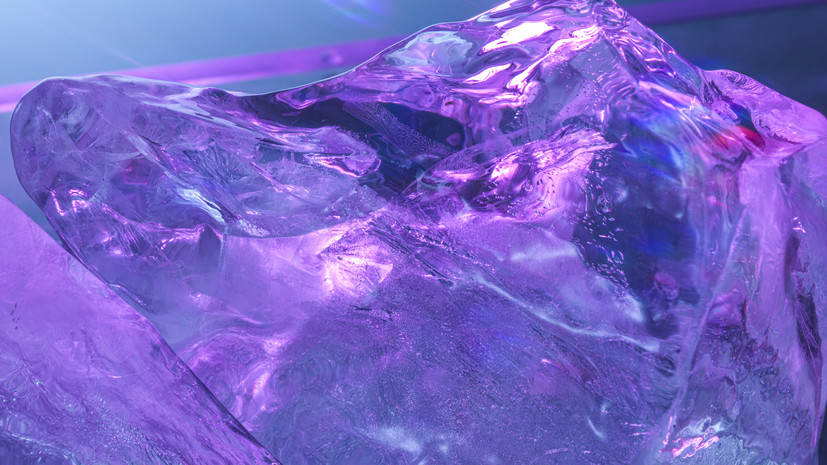Scientists from University College London have discovered a new form of amorphous ice - medium density (MDA - medium-density amorphous ice)
.
According to the authors of the work, this ice can be located inside the icy satellites of such planets in the solar system as Saturn and Jupiter.
Since it turned out that MDA releases a lot of heat during recrystallization (changes in the structure of ice without going into a liquid phase), the researchers suggested that its presence in the bowels of satellites can cause tectonic shifts in their ice sheets.
The results of the study are published in the journal Science.
Recall that amorphous ice is water in the state of a solid amorphous substance, in which the molecules do not line up in an ordered crystal lattice, unlike ordinary ice.
Until now, amorphous ices of high and low density have been known to science.
The latter are practically not found on Earth, but are common in space.
To obtain a previously unknown form of amorphous ice, scientists applied the principle of a ball mill - they vigorously shook ordinary ice in a container with steel balls at a temperature of about -200 ° C.
According to the authors of the work, strong shaking destroyed the crystalline structure of the ice, turning it into amorphous ice.
The density of the obtained ice turned out to be close to the density of liquid water.
This is the main feature of MDA and its difference from the already known amorphous ices of high and low density.
Enceladus, moon of Saturn
Gettyimages.ru
© Stocktrek Images
“We know of 20 forms of crystalline ice, but only two main types of amorphous ice have been discovered so far – high and low density amorphous ice.
Between them there is a huge gap in density, and it is generally accepted that within this gap (individual forms. -
RT
) ice does not exist.
Our study shows that the density of medium-density amorphous ice is in this range, and this finding could have far-reaching implications for our understanding of liquid water and its many anomalies,” said Christoph Salzmann, senior author of the study, Professor of Chemistry at University College London.
According to scientists, their work will allow a fresh look at models of liquid water.
The fact is that the presence of only two forms of amorphous ice - high and low density - previously became the basis for the hypothesis, according to which liquid water can also exist in the form of two liquids of different densities that do not mix with each other.
However, the discovery of amorphous ice of intermediate density casts doubt on this version, the authors of the work believe.
As Christoph Salzmann explained, existing models of water need to be re-examined: they should be able to explain the existence of amorphous ice of medium density.
“We have shown that it is possible to create what looks like ‘water on freeze frame’.
This is an unexpected and rather surprising discovery, ”said Andrea Sella, a professor in the Department of Chemistry at University College London, co-author of the work.

